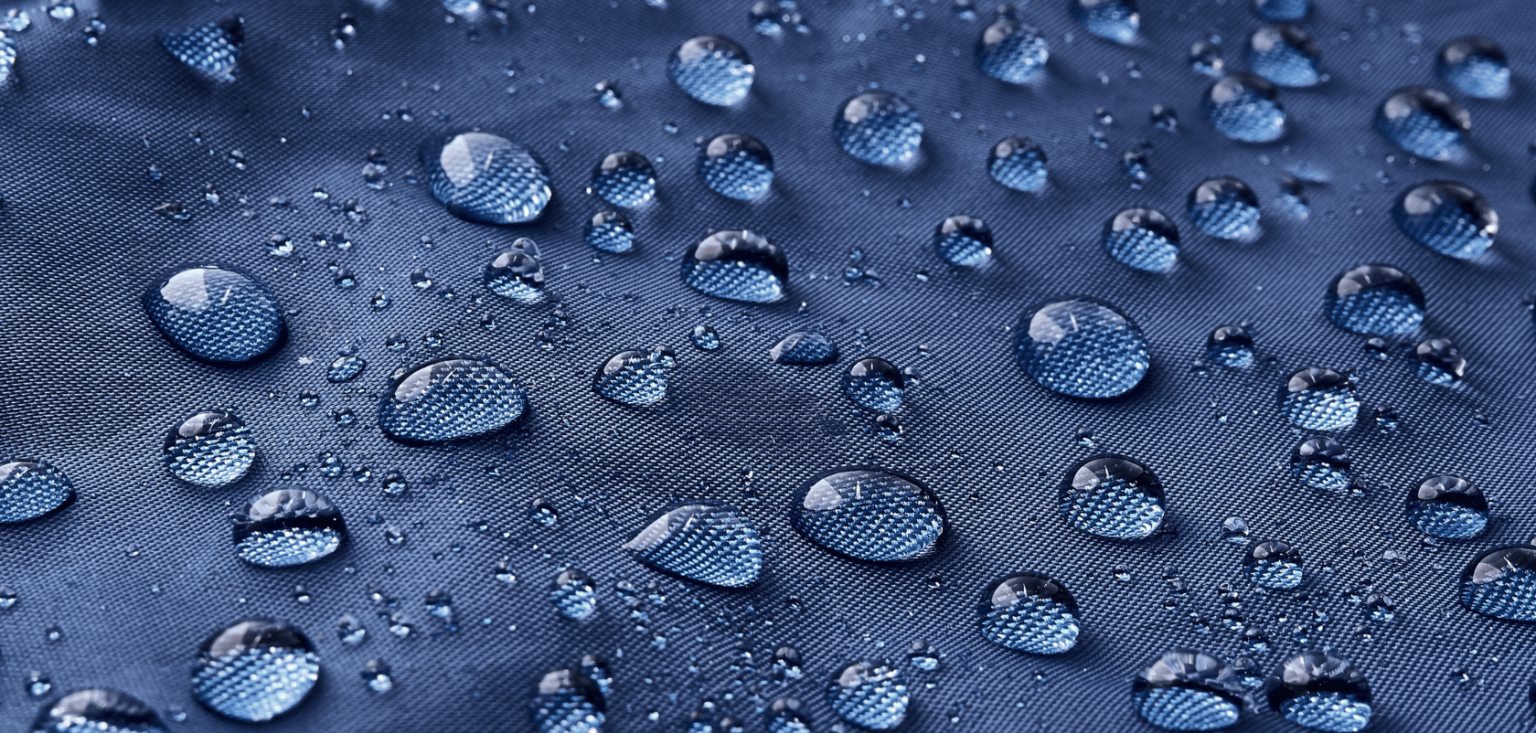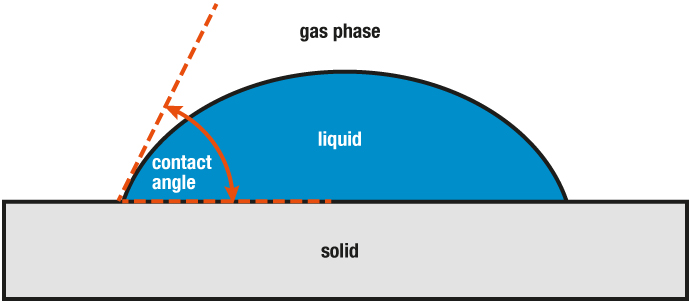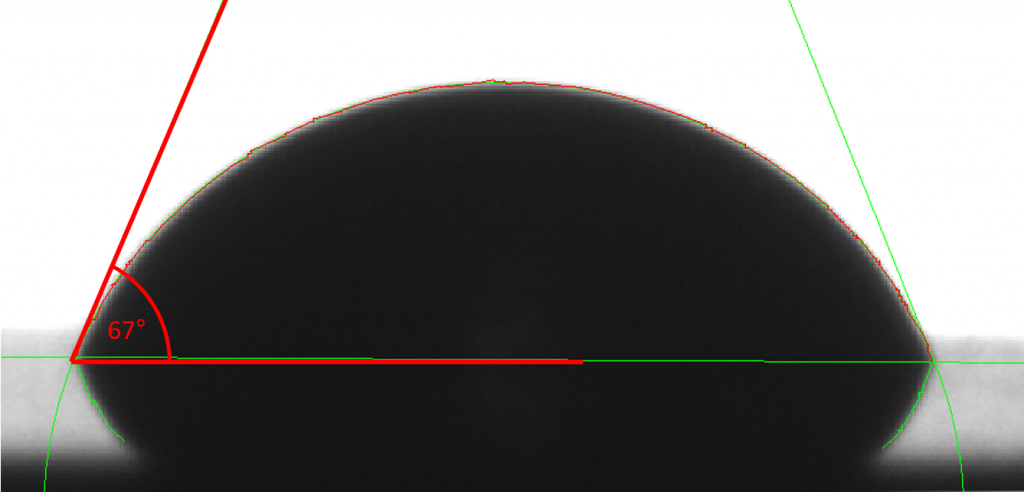Contact angle
Contact angle – Measuring surface tension
The contact angle is a measure of the ability of a liquid to wet the surface of a solid body. The shape that a drop takes on a surface depends on the surface tension of the liquid and the nature of the surface.
At the boundary between the drop and its gaseous environment, the surface tension can cause a curved contour.
At the edge of the drop, where the contour merges into the contact surface, the contact angle is formed between the liquid/solid interface and the tangent to the liquid/gas interface.

Meaning of the angle
If the liquid runs evenly over the solid surface, there is complete wetting with a contact angle of 0°.
If the angle is between 0° and 90°, the surface is wettable. The surface is referred to as hydrophilic.
An angle between 90° and 150° means that the surface is not wettable. It is hydrophobic.
From a value of 150°, it is an ultra-hydrophobic surface that is completely repellent to liquids. This property is described as the lotus effect.
- Angle between 0° and 90° = surface wettable, hydrophilic
- Angle between 90° and 150° = surface not wettable, hydrophobic
- Angles of 150° and above = ultra-hydrophobic surface, completely repels liquid, lotus effect


Contact angle as a basis for decision-making in practice
The knowledge of the contact angle is the basis for assessing the suitability of paints, varnishes and coolants that should wet the materials as well as possible.
In the refinement of certain textiles and water-repellent building facades on the contrary, the lowest possible wetting should be achieved.
The wettability can be influenced by a suitable surface treatment.
The measurement of the contact angle enables the planned development of optimal methods in this field.
The contact angle measurement takes place within the scope of the drop contour analysis, in which the shadow image of the drop is optically evaluated.
In addition, the temperature dependence of the contact angle can be determined exactly with the heating microscope of Linseis.
